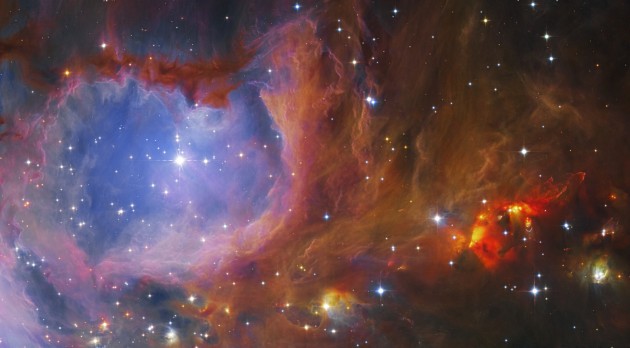High resolution image of Messier 43 taken with the 6.5 meter Magellan telescope in Chile and the MMIRS, which sees into the near-infrared spectrum. (Image by Yuri Beletsky and Igor Chilingarian)
Recently crowned the “astronomy photo of the year” by Slate’s Bad Astronomy blog, a new image of a region of Orion’s belt reveals the deepest look yet into this part of space by piercing through a cloudy veil.
Composed by two astronomers, Igor Chilingarian, with the Smithsonian Astrophysical Observatory in Cambridge, Mass., and Yuri Beletsky with the Carnegie Observatories, who is also a well-known astrophotographer, the dreamscape image resulted from what was only supposed to be a test of a new instrument.
Mounted on the Magellan Clay Telescope at the Las Campanas Observatory in Chile, the Multiple Mirror Telescope (MMT) and Magellan Infrared Spectrograph (MMIRS) is an advanced imaging and spectroscopic tool that makes observations in infrared light. This means the camera is not restricted to what can be seen by the human eye, but can penetrate barriers like dust and clouds to reveal previously unseen detail.
Scheduling time with the telescope is difficult as it is in high demand by astronomers from around the world. Yet finding themselves with some precious extra hours, Chilingarian suggested they point the instrument at an area of the sky that had previously yielded some stunning space photos. Their target: two nebulae, M42 and M43, in the sword of Orion’s Belt that are part of a notorious star-forming region.
The researchers weren’t planning on making a big scientific splash; they merely wanted to put the camera through its paces.

